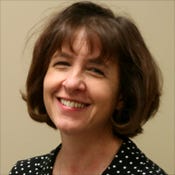Educators around the world are already using OERs to improve learning. Why haven't they been adopted on a broader scale?


10 Tech Tools To Engage Students
10 Tech Tools To Engage Students(click image for larger view and for slideshow)
Education faces many challenges today, and those challenges are growing. While there is unprecedented demand for education, the constraints of cost, quality and access sometimes seem insurmountable. At a time when we need to deliver better and more accessible learning opportunities, budgets are being cut severely.
But what if there were a way to provide high quality education to everyone in the world at a marginal cost of near zero?
It may sound fanciful, but this opportunity exists. By using 21st century technical and licensing tools to make educational content freely available, everyone everywhere could affordably access the high quality educational resources they want.
Open educational resources (OERs) are educational content (textbooks, curriculum, video, etc.) that are both (1) available at no cost and (2) openly licensed. OERs allow for the free reuse, revision, remixing and redistribution of educational content. This is made possible through things like the Internet, digital technologies (which cost almost nothing to store, copy and distribute) and open copyright licenses such as those from Creative Commons.
[ What does "open" mean in education? Read In Shadow Of MOOCs, Open Education Makes Progress. ]
Educators around the world are already using OERs to improve learning. Not only do OERs save money, but they allow teachers and students to put content into various formats that better meet individual student needs, to continually update and improve resources, and to remix content in new and creative ways. We want our students to be forming their own knowledge, making their own creations, remixing existing content into new works, collaborating and actively directing their own scholarship. This kind of deeper learning is much more difficult to achieve with closed, static content.
OER programs may benefit from a 1:1 computer to student ratio, but even without that luxury open resources can deliver amazing results. In Utah, a pilot program used open textbooks from CK-12 with 4,000 secondary students. Because most of the participating schools did not have 1:1 technology programs, many of these textbooks were printed. The program saved more than 50% in curriculum costs through using open textbooks instead of more expensive proprietary ones. In addition, Utah's open textbooks are now updated yearly instead of every seven years. Teachers and students can customize the textbooks. Students not only can take textbooks home, but are allowed to highlight, annotate and take notes in them, resulting in more direct engagement. Overall, the program has been so successful that the state has decided to expand it statewide and into language arts and math (Utah is a Common Core state, making its openly licensed textbooks useful to the 45 states, the District of Columbia and four territories that have adopted Common Core.)
Other school districts have used open-license resources as the primary content for students using mobile devices. In order to differentiate instruction, these schools know that they need a variety of resources that address a range of reading levels, learning styles and interests. In addition, these schools need instructional resources that can be easily and legally reformatted and put on a variety of devices, such as tablets and e-book readers. OERs grant these options at an affordable price. This allows budgets to be redirected from expensive textbooks toward technology tools, teachers and professional development.
So why haven't OERs been adopted on a broader scale?
The answer is that we have a policy problem. Most policy makers -- from the local district to the federal level -- don't understand 21st century technical and licensing tools and how they can collectively enable greater access to education. Absent this, policy makers are left making decisions within old frameworks and business models.
Moving to newer, more efficient models may seem obvious, but the policy sphere is slow to change and entrenched in and influenced by existing models. There is deep investment in doing things the way they have always been done.
Questions can also arise, such as how does the OER model affect the commercial textbook industry? Policy that supports OERs doesn't necessitate any change to commercially produced materials. Each content producer chooses to sell its goods under whatever license and at whatever price it wishes. And consumers, in this case educators and students, can choose whichever materials they think best meet their needs. That is the free-market system.
I am advocating for a policy change for publicly funded education materials. Billions of dollars are spent by our governments on education resources each year. These publicly funded resources should be open and publicly accessible.
The goal of public education expenditures should be to maximize the reach and impact of education in the most efficient and equitable fashion. There is no better way to do that than to open-license and share publicly funded resources so that more teachers, students and citizens can have access to high-quality education resources. As taxpayers, we should demand this. Publicly funded resources should be openly licensed, period.
Thanks and acknowledgement to Dr. Cable Green, Director of Global Learning, Creative Commons, for many of the ideas in this article.
About the Author(s)
You May Also Like







